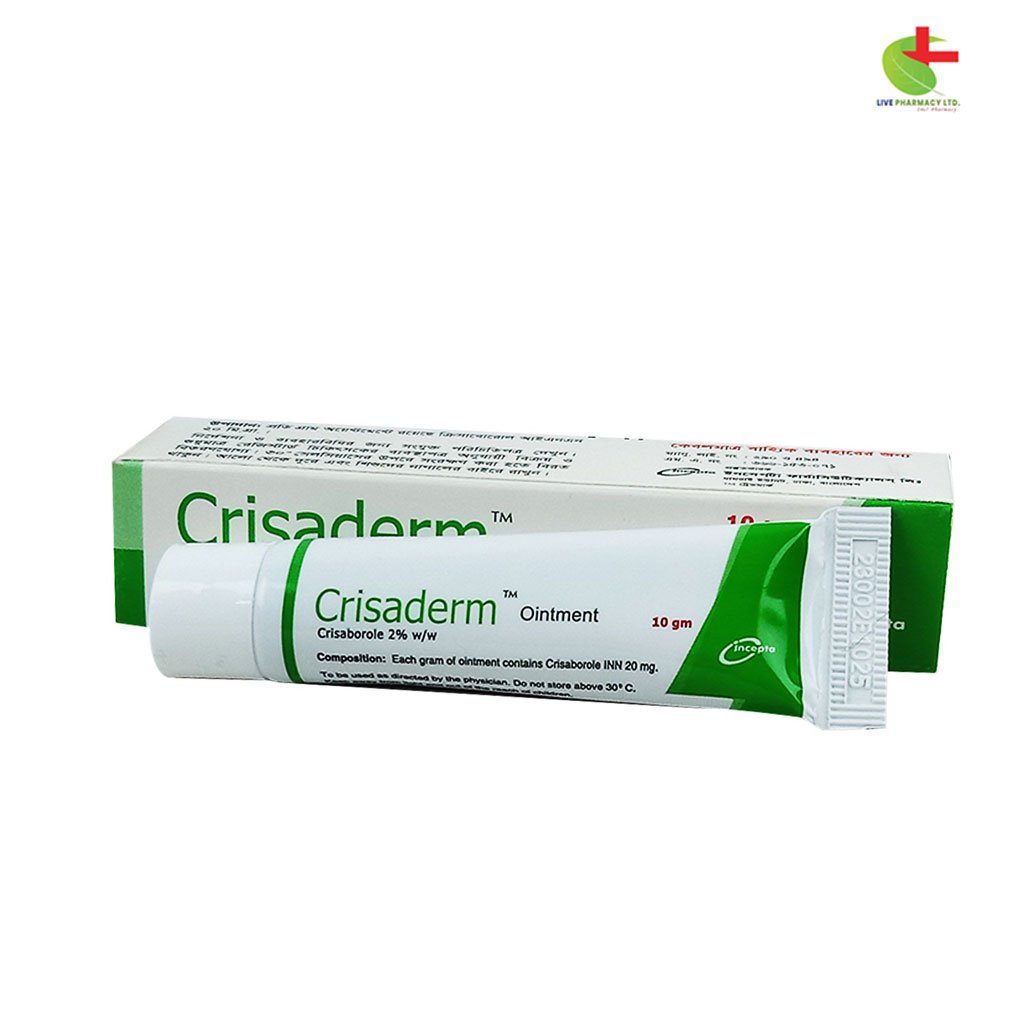Crisaderm
500.00৳ Tube (10gm)
- Crisaderm is a topical medication designed to treat mild to moderate atopic dermatitis in children aged 3 months and above.
- It contains Crisaborole, a PDE-4 inhibitor that reduces inflammation by targeting specific immune responses.
- Applied twice daily, Crisaderm works at the site of irritation to relieve symptoms like itching and redness.
- Safe for external use only, it should be stored below 30°C and kept out of children’s reach.
 Brand
Brand
|
Incepta Pharmaceuticals Ltd |
|---|---|
 Generics
Generics
|
Crisaborole |
 Type
Type
|
Ointment |
Indications
Crisaderm is recommended for the topical management of mild to moderate atopic dermatitis in children aged 3 months and older.
Please use this medication as advised by a licensed healthcare provider.
Pharmacology
Crisaborole, the key ingredient in Crisaderm, functions as a phosphodiesterase-4 (PDE-4) inhibitor, primarily targeting phosphodiesterase 4B (PDE4B) to reduce inflammation. Chemically, Crisaborole is a type of phenoxybenzoxaborole, featuring a boron atom that aids skin penetration and is crucial for its anti-inflammatory action. By inhibiting PDE4B, Crisaborole may limit the release of pro-inflammatory proteins such as TNFα, IL-12, IL-23, and various other cytokines associated with immune and inflammatory responses.
Dosage & Administration
Apply Crisaderm thinly to affected skin areas twice daily. This product is for external use only and should not be applied in or around the eyes, orally, or intravaginally.
Always consult a licensed physician before use.
Interaction
Laboratory studies on human liver microsomes suggest that, at therapeutic levels, Crisaderm and its primary metabolite do not significantly inhibit cytochrome P450 enzymes, including CYP1A2, 2B6, 2C8, 2C9, 2C19, 2D6, and 3A4. Similarly, studies for a secondary metabolite indicate no inhibition of CYP2C19, 2D6, or 3A4.
Side Effects
Crisaderm may cause allergic reactions at or near the site of application, potentially presenting as hives, itching, swelling, or redness. The most frequently reported side effect is localized discomfort, such as burning or stinging.
Pregnancy & Lactation
Pregnancy: Currently, there is no conclusive research on the potential risks associated with Crisaborole use during pregnancy. Studies on animals did not show any negative developmental effects at doses up to 3 times the recommended maximum for humans in rats and 2 times in rabbits.
Lactation: Information on the presence of Crisaborole in human milk is not available. While Crisaborole is systemically absorbed, there is insufficient data to clearly establish the risk to a breastfeeding infant.
Precautions & Warnings
Patients may experience hypersensitivity reactions, such as contact urticaria, while using Crisaderm. If any signs of hypersensitivity occur, stop using Crisaderm immediately and seek appropriate treatment.
Therapeutic Class
Topical Anti-inflammatory Medications
Storage Conditions
Store below 30°C, away from direct light and out of children’s reach.













Reviews
There are no reviews yet.